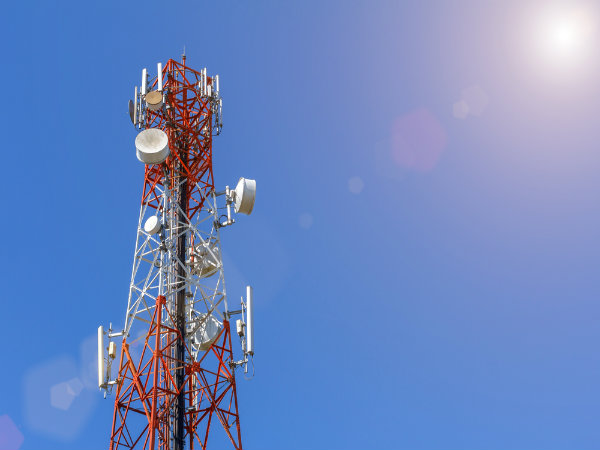Just In
- 2 hrs ago

- 2 hrs ago

- 6 hrs ago

- 12 hrs ago

Don't Miss
- Sports
 Who Won Yesterday's IPL Match 34? LSG vs CSK, IPL 2024 on April 19: KL Rahul Stellar Batting Show Decimate Chennai Bowling
Who Won Yesterday's IPL Match 34? LSG vs CSK, IPL 2024 on April 19: KL Rahul Stellar Batting Show Decimate Chennai Bowling - Finance
 Rs 17/Share Dividend: Record Date On April 26; Buy The ICICI Group Stock To Be Eligible?
Rs 17/Share Dividend: Record Date On April 26; Buy The ICICI Group Stock To Be Eligible? - Movies
 Chief Detective 1958 Episode 2 OTT Release Date, Time, Platform: When & Where To Watch? What To Expect? DEETS
Chief Detective 1958 Episode 2 OTT Release Date, Time, Platform: When & Where To Watch? What To Expect? DEETS - News
 Chinese President Xi Jinping Orders Biggest Military Reorganisation Since 2015
Chinese President Xi Jinping Orders Biggest Military Reorganisation Since 2015 - Education
 Exam Pressure Does Not Exist; Studying Punctually is Crucial; Says Aditi, the PSEB 2024 Topper
Exam Pressure Does Not Exist; Studying Punctually is Crucial; Says Aditi, the PSEB 2024 Topper - Automobiles
 Suzuki Swift Hatchback Scores 4 Star Safety Rating At JNCAP – ADAS, New Engine & More
Suzuki Swift Hatchback Scores 4 Star Safety Rating At JNCAP – ADAS, New Engine & More - Technology
 Dell Introduces AI-Powered Laptops and Mobile Workstations for Enterprises in India
Dell Introduces AI-Powered Laptops and Mobile Workstations for Enterprises in India - Travel
 Journey From Delhi To Ooty: Top Transport Options And Attractions
Journey From Delhi To Ooty: Top Transport Options And Attractions
How Cellular Antennae Can Harm You
Here is how cellular antennae can harm your health according to a research. Check it out.
Scientists at the University of California-San Francisco have shown that cellular antennae called cilia, found on fat-forming cells and interspersed in muscles, play a key role in the muscle-to-fat transformation.
The findings, revealed in experiments with mice and published on Thursday in Cell, could open up new prospects for regenerative medicine, and one day enable researchers to improve muscle renewal during aging and disease, Xinhua news agency reported.
As we age, our muscle cells are slowly exchanged, one by one, for fat cells.The process quickens when we injure a muscle, and an extreme form of this process is seen in muscle-wasting diseases such as Duchenne muscular dystrophy (DMD).
High levels of intra-muscular fat have long been associated with a loss of strength and impaired mobility, and more fall in elderly or obese individuals and in patients with DMD.

"The frailty of age is a huge biomedical problem," said Jeremy Reiter, a professor of biochemistry and biophysics at UCSF and senior author of the paper. "This study paves the way to learn how muscles normally age, and provides a new way to possibly improve muscle repair."
Primary cilia are tiny cellular appendages a bit like cellular tentacles that paramecia and other single-celled critters use to move and gather food.
But unlike those motile cilia, primary cilia do not move at all. They stand stiff and solitary on the surface of nearly all of our cells, including neurons, skin cells, bone cells and certain stem cells.
Recent work at Reiter's lab has revealed that primary cilia act much like cellular antennae, receiving molecular cues from neighbouring cells, and processing environmental signals such as light, temperature, salt balance and even gravity.

Previous work has shown that when muscle is injured, fat-forming cells that live alongside muscle cells, called fibro/adipogenic progenitors (FAPs) divide and differentiate into fat cells.
Daniel Kopinke, a postdoctoral fellow in the Reiter lab and first author of the study, found that, unlike muscle cells, the fat-forming FAPs are more likely to carry primary cilia, and muscle injury further increased the abundance of FAPs with cilia.
The group has discovered that genetically engineering cells without cilia result in a low-level activation of the Hedgehog pathway, which is enough to block fatty degeneration of skeletal muscle.
"Now for the first time we have a handle on the cell type that turns muscle into fat, and we have a handle on the signaling pathway that controls the conversion," Kopinke said. "Maybe one day we could use this knowledge to improve muscle function."
With Inputs From IANS
-
 healthLazy But Effective Weight Loss: 5 Winter Hacks To Shed Fat Without Breaking A Sweat
healthLazy But Effective Weight Loss: 5 Winter Hacks To Shed Fat Without Breaking A Sweat -
 healthDo You Have Hidden Belly Fat? How To Know?
healthDo You Have Hidden Belly Fat? How To Know? -
 beautyDo This Skin Toning Trick Everyday To Get Rid Of Double Chin
beautyDo This Skin Toning Trick Everyday To Get Rid Of Double Chin -
 healthWeight Loss: How Long Should You Wait After Dinner To Sleep To Promote Fat Burning
healthWeight Loss: How Long Should You Wait After Dinner To Sleep To Promote Fat Burning -
 healthWeight Loss Diet Plan To Help Lose 5Kgs In A Week
healthWeight Loss Diet Plan To Help Lose 5Kgs In A Week -
 healthThe Hidden Secret of Weight Loss: Dinner Timings; What You MUST Know!
healthThe Hidden Secret of Weight Loss: Dinner Timings; What You MUST Know! -
 health5 Unusual Weight Loss Tips; May Seem Weird, But Actually Works
health5 Unusual Weight Loss Tips; May Seem Weird, But Actually Works -
 healthMyths vs Facts: Skipping Breakfast Makes You Fat
healthMyths vs Facts: Skipping Breakfast Makes You Fat -
 healthWeight Loss Tips: 3 Morning Exercises To Burn Fat And Boost Weight Loss
healthWeight Loss Tips: 3 Morning Exercises To Burn Fat And Boost Weight Loss -
 healthWeight Loss: What Happens When You Drink Coconut Milk Every Day? Can It Help Lose Weight?
healthWeight Loss: What Happens When You Drink Coconut Milk Every Day? Can It Help Lose Weight?


 Click it and Unblock the Notifications
Click it and Unblock the Notifications



